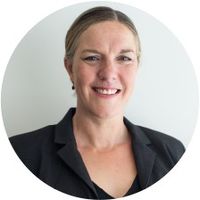Central Auckland, East Auckland, North Auckland, South Auckland, West Auckland > Private Hospitals & Specialists >
Ascot Central Women's Gynaecology Clinic
Private Service, Obstetrics and Gynaecology, Physiotherapy
Today
8:00 AM to 4:00 PM.
Description
Ascot Central Women's Clinic in Auckland is made up of a group of doctors who all have strong working expertise in the area of gynaecological surgery and gynaecological oncology. By working together as a team they are able to ensure that women see the most appropriate professional within the group, as we provide services in all aspects of women's health.
With the additional support of our Physiotherapist, Hannah Orr and health Psychologist, Lynette Dalgleish, Ascot Central Women's Clinic are a multidisciplinary team with many years' expertise.
Consultants
-

Mr Douglas Barclay
Gynaecologist
-

Dr Sarah Corbett
Gynaecologist
-

Mr Simon Edmonds
Gynaecologist
-

Dr Sarah Fitzgibbon
Gynaecologist
-

Dr Ai Ling Tan
Gynaecological Oncologist
-

Dr Anna-Marie Van Der Merwe
Gynaecologist
Physiotherapists
-

Hannah Orr
Physiotherapist
Referral Expectations
Appointments for any of the doctors can be made by phoning the rooms (09) 520 9361.
Please click here for more information about appointments with us.
Fees and Charges Description
Initial Consultation $370.00
The consultants at Ascot Central Women's Cllinic are Southern Cross Affiliated Providers. Please contact us for more information and claim suport.
Hours
8:00 AM to 4:00 PM.
| Mon – Fri | 8:00 AM – 4:00 PM |
|---|
Common Conditions / Procedures / Treatments
The endometrium is the name of the tissue that lines your uterus (womb). Endometriosis is a condition where tissue, like the endometrium, grows in other parts of the body. Usually these growths occur inside the pelvic cavity in places such as the ovaries, bowel, or a lining of the pelvic cavity and abdomen called the peritoneum. Each month, as the endometrial lining of the uterus builds up with blood that will be lost during your period, these other growths of endometrial tissue get bigger and can bleed and cause inflammation and adhesions (internal scarring). Some women with this condition do not have many symptoms, whereas others suffer severe pain and problems such as infertility and tiredness. Treatment includes medication that will help control the pain and inflammation, and some women may need surgery to remove the tissue growths.
The endometrium is the name of the tissue that lines your uterus (womb). Endometriosis is a condition where tissue, like the endometrium, grows in other parts of the body. Usually these growths occur inside the pelvic cavity in places such as the ovaries, bowel, or a lining of the pelvic cavity and abdomen called the peritoneum. Each month, as the endometrial lining of the uterus builds up with blood that will be lost during your period, these other growths of endometrial tissue get bigger and can bleed and cause inflammation and adhesions (internal scarring). Some women with this condition do not have many symptoms, whereas others suffer severe pain and problems such as infertility and tiredness. Treatment includes medication that will help control the pain and inflammation, and some women may need surgery to remove the tissue growths.
Fibroids are noncancerous growths or tumours on the muscular part of the uterus (womb); sometimes they are also called myomas. Fibroids may be very small (about 5mm) or can grow to be quite large (about 100mm). Many women with fibroids do not notice any symptoms and will not need treatment, whereas others may experience problems such as painful and heavy periods. Treatment includes medication to shrink the fibroids and, in some women, surgical removal.
Fibroids are noncancerous growths or tumours on the muscular part of the uterus (womb); sometimes they are also called myomas. Fibroids may be very small (about 5mm) or can grow to be quite large (about 100mm). Many women with fibroids do not notice any symptoms and will not need treatment, whereas others may experience problems such as painful and heavy periods. Treatment includes medication to shrink the fibroids and, in some women, surgical removal.
An ovarian cyst is a fluid-filled sac or pouch in the ovary. In most cases, the cyst grows as a result of ovulation (when the egg is released from the ovary), and it will usually shrink over time. Sometimes, the ovarian cyst may cause pain. The best way to check for an ovarian cyst is by ultrasound examination, and the treatment will depend on how troublesome the symptoms are. Sometimes it is best to leave the cyst alone and just check it regularly with ultrasound. In other cases it may need to be removed by laparoscopic surgery.
An ovarian cyst is a fluid-filled sac or pouch in the ovary. In most cases, the cyst grows as a result of ovulation (when the egg is released from the ovary), and it will usually shrink over time. Sometimes, the ovarian cyst may cause pain. The best way to check for an ovarian cyst is by ultrasound examination, and the treatment will depend on how troublesome the symptoms are. Sometimes it is best to leave the cyst alone and just check it regularly with ultrasound. In other cases it may need to be removed by laparoscopic surgery.
Polycystic ovarian syndrome (PCOS) is a hormonal disorder that can cause you to have a variety of symptoms, including no periods or irregular periods, increased hair growth on the face and body, acne (pimples) and increased bodyweight. PCOS is also one of the main causes of infertility in women. The ovaries of women with PCOS often contain many small cysts (fluid-filled sacs), but this does not seem to be the cause of the condition. For women who have not reached menopause, the most common treatment is the birth control pill, which will regulate your periods. There are also other medicines that can help control the symptoms.
Polycystic ovarian syndrome (PCOS) is a hormonal disorder that can cause you to have a variety of symptoms, including no periods or irregular periods, increased hair growth on the face and body, acne (pimples) and increased bodyweight. PCOS is also one of the main causes of infertility in women. The ovaries of women with PCOS often contain many small cysts (fluid-filled sacs), but this does not seem to be the cause of the condition. For women who have not reached menopause, the most common treatment is the birth control pill, which will regulate your periods. There are also other medicines that can help control the symptoms.
Menstruation is the medical name for your monthly period. This is when blood and tissue from the lining of the uterus (womb) is shed through the vagina and out of the body. Menstruation starts at puberty and it is stimulated by hormones that make a girl’s body able to become pregnant. This usually happens anytime between the ages of 9 and 16 years. Menstruation will recur about every 28 days (the menstrual cycle), unless interrupted by pregnancy, and will stop at menopause, which occurs at about 50 years of age. There are a number of problems that can occur with menstruation ranging from mild to severe. More than half of all women will have cramps (dysmenorrhoea) during the first day or two of their period. Other problems include very heavy or long periods (menorrhagia) or no periods (amenorrhoea).
Menstruation is the medical name for your monthly period. This is when blood and tissue from the lining of the uterus (womb) is shed through the vagina and out of the body. Menstruation starts at puberty and it is stimulated by hormones that make a girl’s body able to become pregnant. This usually happens anytime between the ages of 9 and 16 years. Menstruation will recur about every 28 days (the menstrual cycle), unless interrupted by pregnancy, and will stop at menopause, which occurs at about 50 years of age. There are a number of problems that can occur with menstruation ranging from mild to severe. More than half of all women will have cramps (dysmenorrhoea) during the first day or two of their period. Other problems include very heavy or long periods (menorrhagia) or no periods (amenorrhoea).
The endometrium is the lining of your uterus (womb). Endometrial ablation is the surgical removal or destruction of this lining. There are different methods of destroying the endometrium including electricity, laser therapy or freezing. A specialist performs the operation and it is done through the vagina, so there is no need for the abdomen to be cut open. The endometrium will heal leaving scarring, which usually reduces or stops menstrual periods. In women who have very heavy periods (menorrhagia), an endometrial ablation can be done instead of a hysterectomy as it is an easier procedure than a hysterectomy and is quicker to recover from. Endometrial ablation is only performed in women who no longer wish to have children.
The endometrium is the lining of your uterus (womb). Endometrial ablation is the surgical removal or destruction of this lining. There are different methods of destroying the endometrium including electricity, laser therapy or freezing. A specialist performs the operation and it is done through the vagina, so there is no need for the abdomen to be cut open. The endometrium will heal leaving scarring, which usually reduces or stops menstrual periods. In women who have very heavy periods (menorrhagia), an endometrial ablation can be done instead of a hysterectomy as it is an easier procedure than a hysterectomy and is quicker to recover from. Endometrial ablation is only performed in women who no longer wish to have children.
Many women experience feelings of tension, anger, fatigue and depression just before and during the first days of their menstrual period. This is called premenstrual syndrome (PMS) and is probably caused by the change in hormone levels. In most women with PMS, symptoms will not be severe enough to require treatment, but some will need to discuss their symptoms with a doctor. Sometimes symptoms can be improved by avoiding some types of food, such as coffee and foods high in salt.
Many women experience feelings of tension, anger, fatigue and depression just before and during the first days of their menstrual period. This is called premenstrual syndrome (PMS) and is probably caused by the change in hormone levels. In most women with PMS, symptoms will not be severe enough to require treatment, but some will need to discuss their symptoms with a doctor. Sometimes symptoms can be improved by avoiding some types of food, such as coffee and foods high in salt.
Cervical dysplasia is the growth of abnormal cells around the cervix (entrance to the uterus). Although this condition is not cancer there is a small risk that these cells could become cancerous. Sometimes no treatment is needed as the condition may improve by itself. For more severe dysplasia, treatment involves removing the abnormal cells by freezing, laser therapy (a tiny beam of light) or electrical burning. Whether you have treatment or not, you should have more frequent Pap smears in the future.
Cervical dysplasia is the growth of abnormal cells around the cervix (entrance to the uterus). Although this condition is not cancer there is a small risk that these cells could become cancerous. Sometimes no treatment is needed as the condition may improve by itself. For more severe dysplasia, treatment involves removing the abnormal cells by freezing, laser therapy (a tiny beam of light) or electrical burning. Whether you have treatment or not, you should have more frequent Pap smears in the future.
Cervical dysplasia is the growth of abnormal cells around the cervix (entrance to the uterus). Although this condition is not cancer there is a small risk that these cells could become cancerous.
Sometimes no treatment is needed as the condition may improve by itself. For more severe dysplasia, treatment involves removing the abnormal cells by freezing, laser therapy (a tiny beam of light) or electrical burning. Whether you have treatment or not, you should have more frequent Pap smears in the future.
A Pap smear is a test to check for signs of cancer on the cervix (entrance to the uterus). A doctor will put an instrument called a speculum into the vagina to open it, and then gently wipe or brush a few cells from the cervix to send to the laboratory for testing. A Pap smear can show if cervical cells are going through any changes that happen before cancer grows. It will also show if cancer cells are present. Regular Pap smears make it possible to prevent cancer before it grows, or to pick up the cancer early so that it is more easily cured. A National Cervical Screening Programme aims to provide all New Zealand women with regular smears and recommends that a Pap smear be done every three years between the ages of 20 and 70 years.
A Pap smear is a test to check for signs of cancer on the cervix (entrance to the uterus). A doctor will put an instrument called a speculum into the vagina to open it, and then gently wipe or brush a few cells from the cervix to send to the laboratory for testing. A Pap smear can show if cervical cells are going through any changes that happen before cancer grows. It will also show if cancer cells are present. Regular Pap smears make it possible to prevent cancer before it grows, or to pick up the cancer early so that it is more easily cured. A National Cervical Screening Programme aims to provide all New Zealand women with regular smears and recommends that a Pap smear be done every three years between the ages of 20 and 70 years.
A colposcopy is a detailed examination of the cervix (entrance to the uterus) with a specially lit microscope (colposcope). As with a Pap smear, an instrument called a speculum is inserted into the vagina, and then the colposcope is positioned outside the vagina with its light directed on the cervix. A specialist will perform a colposcopy if your Pap smear has shown abnormal or cancerous cells on the cervix. During the colposcopy further samples of tissue (biopsies) are usually removed and examined in the laboratory so the doctor can get a clearer idea of the extent of the abnormal cells.
A colposcopy is a detailed examination of the cervix (entrance to the uterus) with a specially lit microscope (colposcope). As with a Pap smear, an instrument called a speculum is inserted into the vagina, and then the colposcope is positioned outside the vagina with its light directed on the cervix. A specialist will perform a colposcopy if your Pap smear has shown abnormal or cancerous cells on the cervix. During the colposcopy further samples of tissue (biopsies) are usually removed and examined in the laboratory so the doctor can get a clearer idea of the extent of the abnormal cells.
A hysterectomy is an operation to remove your uterus (womb). Some types of hysterectomies include the removal of other organs as well, and this will depend on the reason for the operation. A hysterectomy is a treatment for many different diseases and conditions and it can be done through the vagina or through a cut in the abdomen.
A hysterectomy is an operation to remove your uterus (womb). Some types of hysterectomies include the removal of other organs as well, and this will depend on the reason for the operation. A hysterectomy is a treatment for many different diseases and conditions and it can be done through the vagina or through a cut in the abdomen.
An oophorectomy is an operation to remove one or both ovaries. It is done for many reasons including ovarian cancer, ovarian cysts or to remove the source of the hormone oestrogen that is produced by the ovaries and can stimulate some cancers. If both ovaries are removed, your periods will stop and you will not be able to have children. Sometimes an oophorectomy is done together with a hysterectomy.
An oophorectomy is an operation to remove one or both ovaries. It is done for many reasons including ovarian cancer, ovarian cysts or to remove the source of the hormone oestrogen that is produced by the ovaries and can stimulate some cancers. If both ovaries are removed, your periods will stop and you will not be able to have children. Sometimes an oophorectomy is done together with a hysterectomy.
This is an operation where the cervix (entrance to the uterus) is dilated and a hysteroscope (small lighted mini telescope) is inserted into the uterus through the vagina and cervix so the specialist can see the inside of the uterus. If no cancer is present, a small spoon-like instrument with a long handle, called a curette, is inserted and the lining of the uterus is scraped off and sent to the laboratory for examination. This procedure can be done under a general (you are asleep) or local (you are awake but the area being investigated is numb) anaesthetic.
This is an operation where the cervix (entrance to the uterus) is dilated and a hysteroscope (small lighted mini telescope) is inserted into the uterus through the vagina and cervix so the specialist can see the inside of the uterus. If no cancer is present, a small spoon-like instrument with a long handle, called a curette, is inserted and the lining of the uterus is scraped off and sent to the laboratory for examination. This procedure can be done under a general (you are asleep) or local (you are awake but the area being investigated is numb) anaesthetic.
Document Downloads
- Map of Ascot Central (JPG, 518.8 KB)
Travel Directions
Map of Ascot Central
Public Transport
The Auckland Transport Journey Planner will help you to plan your journey.
Parking
Directions coming from the North on SH1: Take exit 433 for Green Lane E, at the roundabout, take the 1st exit onto Green Lane E, turn right onto Ellerslie Racecourse Dr and go straight at the roundabout to enter main parking area.
Directions coming from the South on SH1: Take exit 433 for Green Lane E, at the roundabout, take the 3rd exit onto Green Lane E, turn right onto Ellerslie Racecourse Dr and go straight at the roundabout to enter main parking area.
Pharmacy
Website
Contact Details
Ascot Central, 7 Ellerslie Racecourse Drive, Remuera, Auckland
Central Auckland
8:00 AM to 4:00 PM.
-
Phone
(09) 520 9361
Healthlink EDI
awclinic
Email
Website
Level 1
Ascot Central
7 Ellerslie Racecourse Drive
Remuera
Auckland
Street Address
Level 1
Ascot Central
7 Ellerslie Racecourse Drive
Remuera
Auckland
Postal Address
Ascot Central Women's Clinic
PO Box 128 142
Remuera
Auckland 1541
Was this page helpful?
This page was last updated at 9:23AM on November 22, 2023. This information is reviewed and edited by Ascot Central Women's Gynaecology Clinic.

